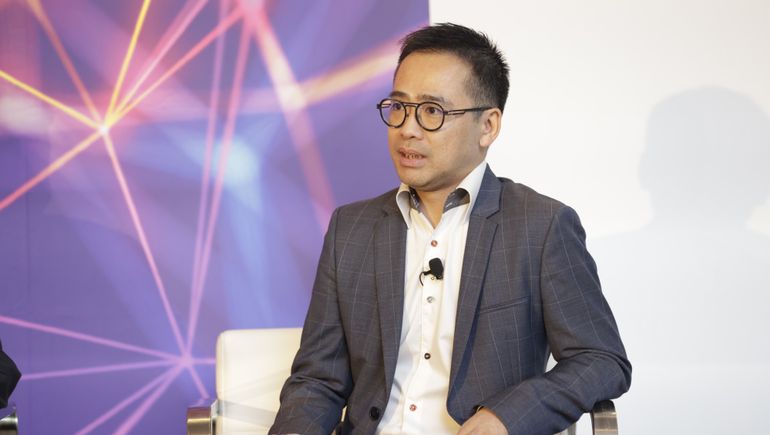After a challenging year for digital health startups that saw a pullback in funding, could partnerships with pharma companies help fuel success? Felix Lee, Sanofi’s U.S. digital healthcare medical head, said pharmaceutical firms can assist with study design, relationships with insurers, and communicating the benefits of a product to patients.
A year ago, Sanofi struck a partnership with digital health company DarioHealth, which makes an app for managing diabetes and a smartphone-connected blood glucose monitor that uses fingersticks. The two companies recently presented data at the American Diabetes Association’s scientific sessions showing that Dario users had a larger reduction in blood sugar levels than non-users.
In an interview, Lee talked about why Sanofi decided to partner with DarioHealth, and how bringing a digital health product to market differs from a drug.
This article has been edited for length and clarity.
MEDTECH DIVE: How did your partnership with DarioHealth come together?
LEE: The whole premise of working with DarioHealth was that even though digital health is not the bread and butter of what a pharma company does, we have these transferable skills that can be applied in the digital health space.
Pharma is very highly regulated. We know how to run studies that are of high quality to meet regulatory standards and to be able to showcase the value of drugs. So we believed that we could do something similar in the digital health space, which is much less well developed.
There were three parts to the partnership. One was co-promotion. [The] second area was around product development. The third area was around evidence generation.
Do you hope your recent study results will translate into payer coverage of Dario’s system?
We were trying to target a few things that payers would want to know. They obviously want to know that [the digital therapeutic] works, but they also more importantly want to know what kind of economic impact it will have for the health plan. Not only does it work on the individual, [but] how does that translate into managing a population of people with diabetes?
We designed the study to show not only what happens on an average individual level, in terms of the A1c reduction between users and non-users. In our secondary endpoint, we also looked at what does that mean in terms of population health management, especially when they have to hit quality measures?
In the last year, several digital health companies including Akili and Better Therapeutics have faced layoffs. Pear Therapeutics, a pioneer in prescription digital therapeutics, filed for bankruptcy. Has that changed your thinking or approach?
The Pear Therapeutics example — they did things following the prescription pathway, and they ran a randomized clinical study, they [had] a pipeline of different indications they were exploring. At the end of the day, some of the feedback that we’ve heard was that the payers are not receptive to it, even though they’ve done all the right things. And then they’re not seeing the patient uptake.
It illustrates that in digital health, there is a lot more than just getting the studies right and proving it works, and getting regulatory approval. There is still a lot after that around things like implementation, do we have the right workflow, etc. It’s a good reminder that the journey in digital health is not the same as for drugs, and we need to take a different lens to look at digital health.
With a prescription digital therapeutic, the provider and the physicians need to know exactly how things work because they are the ones prescribing it. And so, there is a very big learning curve.
With a non-prescription one, I think one of the benefits is that the companies themselves take on the burden of activating the patients who want to be using this, and so in a way it relieves the burden off the [healthcare provider] community. But at the same time, they can still benefit from all the data in between episodes of care that is still accumulated.
How does a solution like this fit in with drugs and devices used to manage diabetes?
The way we look at digital health is that it is another mode of intervention. Digital health operates in an ecosystem.
A few months ago, Dario also signed a data-sharing agreement with Dexcom. What we’re trying to do is to make sure that regardless of whether a patient is using a finger-stick [glucose] meter like Dario’s, or they’re using a CGM like Dexcom, the glucose monitoring data can flow in and complement the other types of data that Dario has, whether it is around carb counting, measuring blood pressure, measuring weight, adding a dose of insulin, or logging food. All of that comes into the same place, so that there’s much more context around how to interpret the blood glucose readings.
The way we’ve designed the studies is to show that there is additional benefit over and above whatever usual care of drug treatment that these people are having. Because — even though I work for a pharma company — I’m in the area where we are working on digital health and we’re separate from the drugs business, so we don’t have a specific interest around Sanofi drugs. We’re trying to look at the person with diabetes more holistically.
We see digital as a complement to drug therapy. It is really there to help optimize the journey that the patient is taking as they are living with the disease, and hopefully it optimizes the way that they are interacting with the healthcare system, so the patients themselves benefit more.

